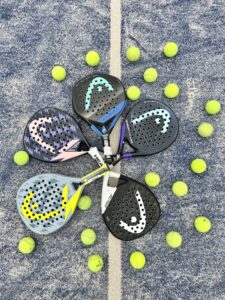Demystifying Padel Court Boundaries: Everything You Need to Know
3 min read
Demystifying Padel Court Boundaries: Everything You Need to Know
Playing padel can be both thrilling and confusing, especially when it comes to understanding the court boundaries. But fear not, fellow padel enthusiasts, for this article aims to demystify the intricacies of padel court boundaries and equip you with the knowledge you need to enjoy the game to its fullest.
What are Padel Court Boundaries?
Padel court boundaries define the playing area where all the action takes place. They serve as the invisible walls that keep the ball in play and determine whether a shot is considered in or out. Properly understanding these boundaries is essential for players to make accurate calls and play the game with fairness.
The Role of Walls
Unlike traditional tennis courts, padel courts are enclosed with walls on all sides. These walls are constructed using materials such as glass or metal mesh, which allow the ball to rebound off them during play. Not only do these walls add an exciting element to the game, but they also impose certain rules regarding how the ball can be played off them.
The Basics of Padel Court Boundaries
To grasp the concept of padel court boundaries, let’s break it down into a few essential factors:
1. The Side Walls: The side walls are an integral part of the court boundaries. A valid shot must pass between the side walls, ensuring that the ball remains within the boundaries. If the ball touches the side wall before hitting the ground, it is considered in play, as long as it remains within the other boundaries.
2. The Back Wall: The back wall plays a significant role in determining the game’s dynamics. Shots that hit the back wall are generally considered in bounds, as long as they do not touch the ground outside the court boundaries before doing so. However, hitting the back wall with excessive force might result in a shot bouncing back harder than expected, requiring players to be prepared for unexpected shots.
3. The Service Zone: When serving, players must ensure that they hit the ball within the service zone. This is a smaller area located at the back of the court, delineated by lines that are parallel to the back wall. It is important to serve the ball into this zone; otherwise, it will be considered a fault, just like in tennis.
Understanding the Boundaries in Action
To better grasp how the court boundaries work, let’s imagine a scenario. Player A serves the ball, making sure it lands within the service zone. Player B receives the serve and returns it, hitting a powerful shot against the side wall. The ball bounces back and crosses the net. Player A, positioned near the back wall, strikes the ball, sending it soaring high up towards the back wall. The ball narrowly misses hitting the top of the back wall but eventually touches the back wall without going over it. It lands back in Player B’s court, who fails to return it. In this scenario, all shots were considered in, as they stayed within the court boundaries.
Conclusion
Hopefully, this article has shed some light on the often mystifying topic of padel court boundaries. Understanding these boundaries is crucial for players to make accurate calls and play the game with fairness. So the next time you step onto a padel court, remember the role of the walls, the importance of the side and back walls, and the significance of the service zone. Armed with this knowledge, you are now ready to unleash your padel prowess and enjoy the game to the fullest.
So go ahead, gather your friends, grab your rackets, and dive into the fascinating world of padel – now equipped with the wisdom needed to truly understand padel court boundaries.







